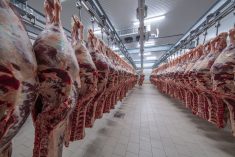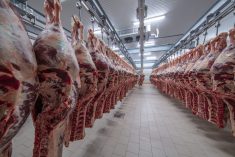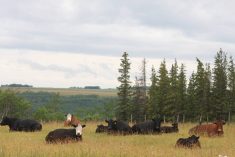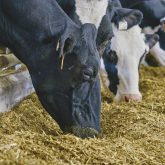A southeastern Ontario company best known for its work in blast freezing and cold storage for food manufacturers has picked up public funding to expand into meat processing.
Canadian Blast Freezers, operating at Quinte West, about 20 km west of Belleville, will get $861,575 from the province’s Rural Economic Development program for a project to handle further-processing of pork products.
The company will use the funding to renovate a dry storage facility into a meat processing plant, where it plans to develop new meat products that are expected to boost its annual sales by $40 million and create “at least 106” new jobs, the province said Monday.
Read Also

Nestle quits global alliance on reducing dairy methane emissions
Food group Nestle said on Wednesday it had withdrawn from a global alliance for cutting methane emissions that aims to reduce the impact of dairy farming on global warming.
The processing facility is expected to be ready in June, the province said.
“Ontario’s support for this project is crucial in helping us respond to the demand for value-added meat products,” company president Dale Willard said in the province’s release.
The retrofitted facility will allow Canadian Blast Freezers to diversify its product line and expand its customer base, he said.
The project is also expected to support “growth opportunities for non-agricultural businesses” in the area, the province said.
The company bills itself as providing blast freezing, cold storage and “export solutions” for the food industry, saying “we understand that our freezer facilities are an extension of our customer’s processing plant.”
The firm offers “real time” online access for customers to manage inventory kept at the plant “as if it were in their own plant location.”
The company is also an approved Canadian Food Inspection Agency (CFIA) re-inspection station for imports of foods from the U.S. and other countries, and offers trichina treatment for exporters of Canadian foods, using blast cells to create “extremely low” temperatures.












